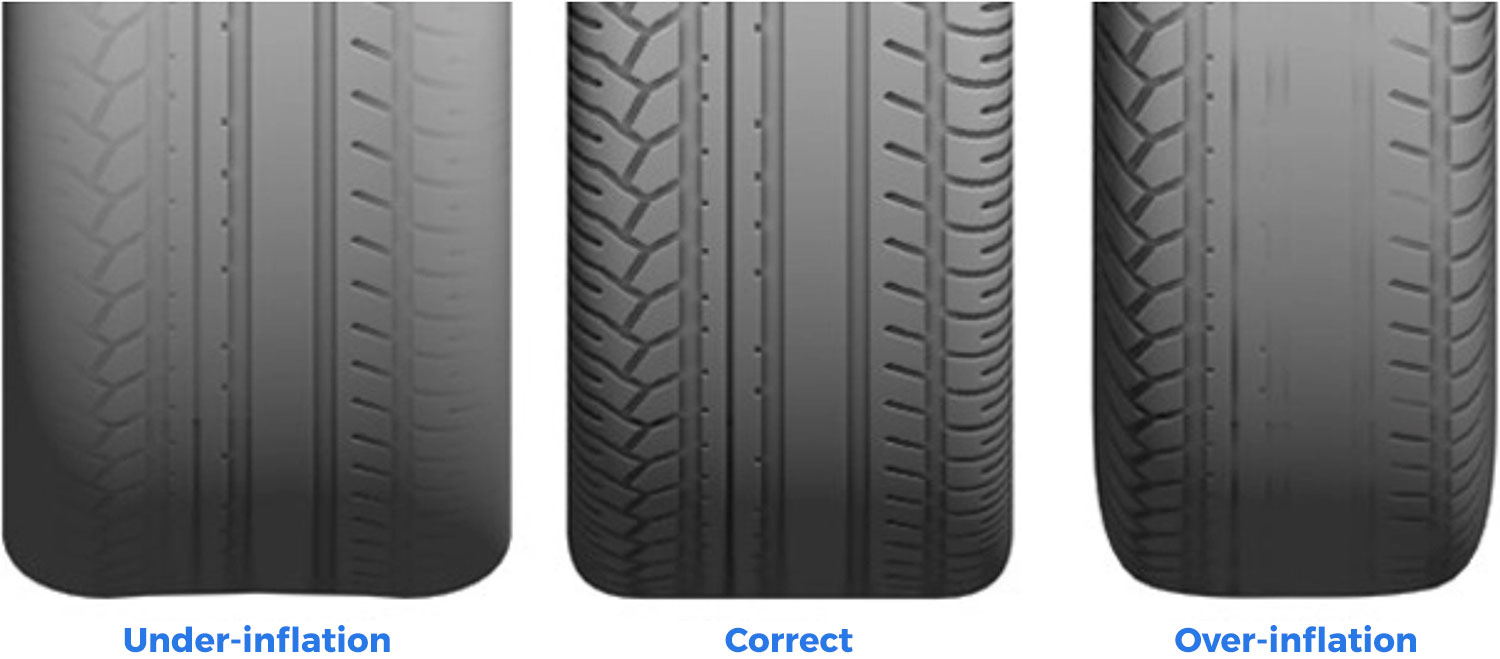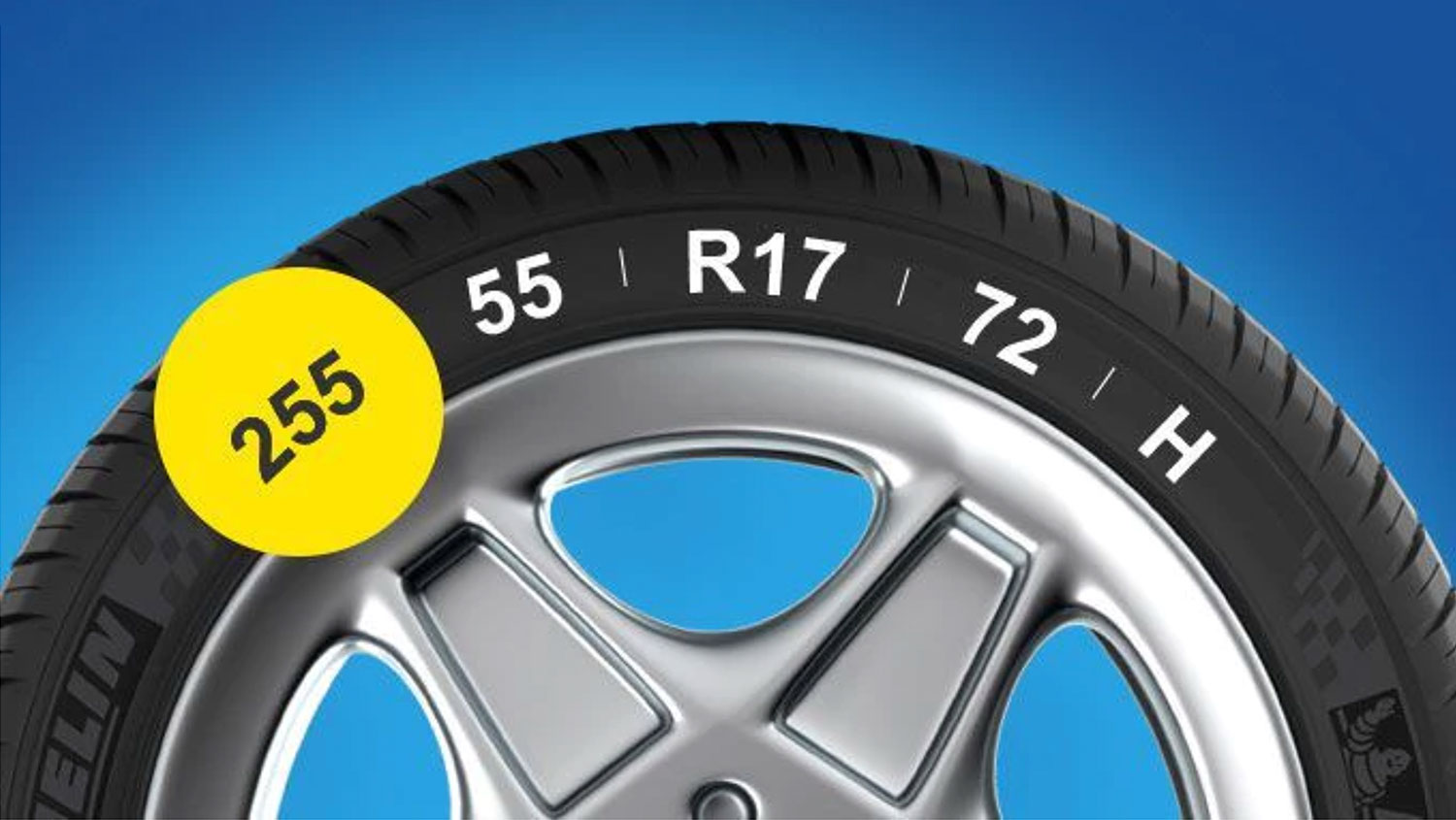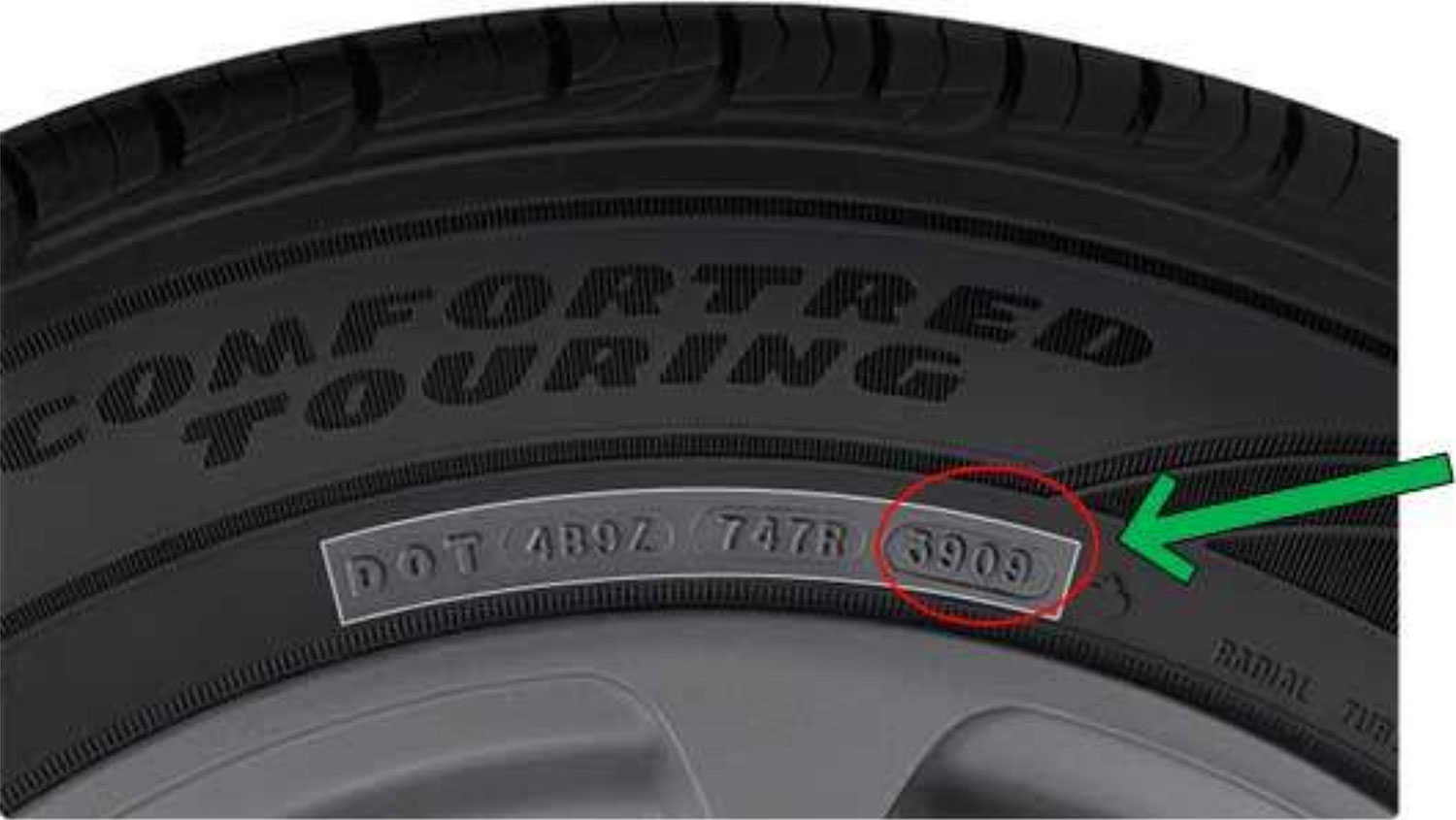Understanding Your Tyres
Understanding Your Tyres Could Save Your Life (And Reduce Your Fuel Bills).
With two of the wettest summers on record in New South Wales, in this first part of a two part blog, we give you the heads-up on your tyres and explain why, whether the roads are wet or dry, they are THE most important safety consideration for your vehicle.

In a recent survey by one of Australia’s largest car rental companies, more than half of motorists said they didn’t know the correct tyre pressures for their vehicle.
Driving with too much or too little air pressure in your tyres can affect the ride comfort, cornering ability, grip during braking, general handling, and directional stability of your vehicle.
Having incorrect tyre pressure isn’t just a safety risk, it can also ruin your vehicle’s fuel economy and cause premature tyre wear.
Overinflation
When a tyre contains too much air, there’s a much smaller area of contact between the tyre and the road. This results in a loss of traction and uneven tread wear.
Overinflated tyres can affect handling (especially when cornering at speed), the braking ability of the vehicle, tyre noise and overall ride comfort.
Also, an over inflated tyre is far more likely to suffer a puncture from a rock, spike, screw, nail, etc. that it runs over.
Overinflated tyres need replacing sooner because of increased wear to the centre of the tyre tread.
Underinflation
An underinflated tyre has a larger contact area with the road. Because of this, driving on underinflated tyres increases your cars rolling resistance, forcing your engine to work harder and use up to 10% more fuel.
Additionally, steering response and stability can be affected when attempting to turn.
Underinflated tyres need replacing sooner because of increased wear to the outside edges of the tyre tread.
So how do you find out the correct pressure for your tyres?
While each vehicle should have a specified tyre pressure recommended by the tyre manufacturer, you can also check your vehicle owner’s handbook, the fuel filler flap or the plate located inside the driver’s door.
At John Dale Motors we check and adjust your tyre pressures as part of a routine vehicle service or safety inspection.

Understanding Tyre Codes
This image shows the standard size format for most road-going tyres: three digits, followed by a slash (/), two more digits, a space, the letter ‘R’ and two more digits.
The first three digits refer to the tyre’s width, measured in millimetres. Narrower tyres can measure as little as 145mm for small cars, and very wide tyres measuring up to 355mm are the type fitted to high-performance sports cars.
The two-digit number following the slash is the side profile of the tyre as a percentage of the width. A smaller number (50 or less) indicates a lower profile tyre, providing reduced sidewall flex for better handling, roadholding and steering, but usually worse ride comfort.
Higher-profile tyres are more common on family cars, SUVs, off-road vehicles and light-commercial vehicles.
‘R’ is for ‘Radial’, the tyre construction. In some cases, the ‘R’ will be preceded by a ‘Z’, which indicates a high- performance tyre capable of managing speeds in excess of 240km/h.
The following two digits (17 in the example above) are the wheel diameter, measured in inches. Strangely, wheels have never made the jump from imperial to metric measurements.
Following the tyre’s size is a code comprising two digits (the load index) and a single letter, which is the tyre’s speed rating. 72H in this example.
Load indices range from 70 (for a tyre bearing a maximum weight capacity of 335kg) all the way up to 126 (1700kg maximum weight).
The speed ratings run from ‘L’ (up to 120km/h) to ‘V’ (up to 240km/h) in 10km/h increments and excluding an ‘O’ rating, because that letter could easily be mistaken for zero.

Tyre Ageing
Thanks to advanced methods used by tyre manufacturers in their distribution and storage systems, new tyres can be kept for years without degrading. However, this is not the case once the tyres have been fitted to your vehicle.
Aged tyres simply don’t perform as well as newer ones. As the rubber in a tyre gets older, temperature changes, exposure to sunlight, and water ingress all affect the condition of your tyres.
Cracks in the rubber will eventually begin to form. These cracks may appear on the tyre’s surface, but they can also appear out of sight, within the structure of the tyre. Eventually, the cracking can even cause the steel belts in the tread to separate from the rest of the tyre.
Driving on such a tyre is a serious safety risk. So how can you know the age of your tyres?
All tyres have a DOT number, which is pressed into the sidewall of the tyre during construction. This identification number is usually preceded by the acronym “DOT” and consists of a list of numbers. The last four are the ones you should pay attention to.
They denote the week and year of manufacture. For example, a DOT number ending in 3909 tells us that the tyre was made in the thirty ninth week of 2009. If your tyres are more than five years old then it really is time, in the interests of safety and performance, to have them replaced.
Tyre Damage
As this article from ABC News testifies, a cracking road base and potholed surfaces are a common sight in New South Wales, as heavy downpours and strong winds have battered the state, leading to the prospect of years of ongoing road repairs.
https://www.abc.net.au/news/2022-04-01/potholes-damage-cars-drivers-rights/100958416
Tyre damage caused by potholes is on the increase, but can also occur for a variety of reasons other than poor road surfaces (some of today’s super low profile, performance car wheels and tyres, for example). It can happen without you being immediately aware there’s a problem.
It’s good practice to check your tyres for damage once a week, especially after severe weather. If there are any obvious signs, such as cuts, cracks, bulges, wheel damage or irregular wear, book your car in with the experts at John Dale Motors in Charmhaven for a peace of mind safety inspection as soon as possible.
More To Come
Next month, in Part Two of our Tyres Blog, we’ll focus on All Wheel Drive Tyre Replacement, Run Flats, Puncture Repair vs Tyre Replacement, Spacesaver Wheels and Tyres, and why here at John Dale Motors we recommend Kumho Tyres.
Useful Video Links
- Pressure Related Tyre Wear: https://www.srvc.video/z4C9
- Tyre Ageing: https://www.srvc.video/3neA
- Tyre Damage: https://www.srvc.video/OxlC

Facebook Connect
About
Delivering expert car servicing and repairs for most makes and models, combined with outstanding customer service to motorists in Morisset and throughout the Central Coast.

Get In Touch
(02) 4392 1327
Unit 2, 15 Brodie Street, Morisset, NSW, 2264
Mon - Fri | 7:30am - 4:30pm